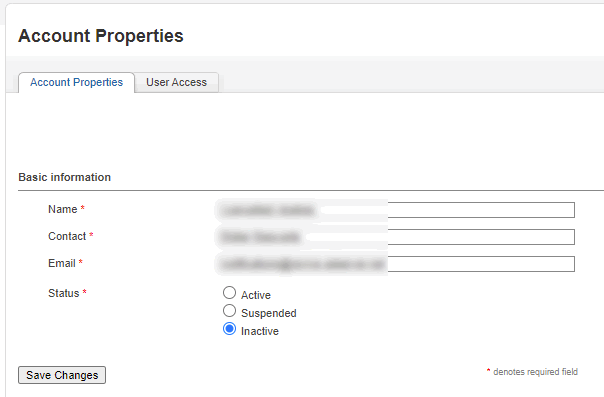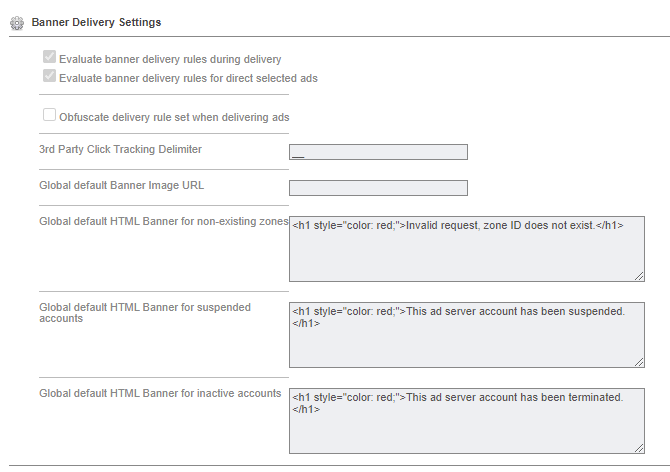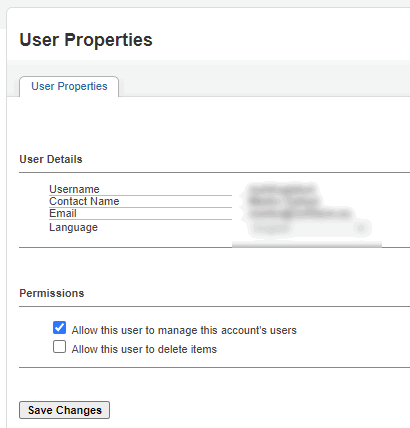What’s New?
in Revive Adserver v5.1
This blog post provides a detailed description of the changes and enhancements in version 5.1 of the Revive Adserver software, including an explanation of the reasons behind some of the changes.
Introduction
On January 19, 2021, we released version 5.1 of Revive Adserver. The release notes for the new version list the changes, enhancements and improvements in a technical manner. We thought it might prove useful to provide some more detailed descriptions and explanations about the changes.
Improved Password Recovery Emails
We have reworded the email message that is sent to users when they request a password reset. These emails were not very informative in the past, so they sometimes caused confusion.
The new text looks similar to this example:
Dear recipient,
You, or someone pretending to be you, recently requested that your Revive Adserver password be reset.
If this request was made by you, then you can reset the password for your username ‘{username}’ by clicking on the following link:
<link appears here>
If you submitted the password reset request by mistake, or if you didn’t make a request at all, simply ignore this email. No changes have been made to your password and the password reset link will expire automatically.
If you continue to receive these password reset mails, then it may indicate that someone is attempting to gain access to your username. In that case, please contact the support team or system administrator for your Revive Adserver system, and notify them of the situation.
Accounts can be active, suspended, or inactive
The Revive Adserver software has the ability to house multiple accounts. These can be useful, for example, if one installation of the software is to be used by multiple business units of a larger organization, or if the software is used to provide commercial hosting services, such as the Revive Adserver Hosted edition.
Especially in the latter case, it was found that subscribers often forget to remove the ad server codes from their websites when they cancelled their subscription. It also happens sometimes that the monthly renewal payment for their subscription fails.
For these scenarios, we’ve introduced a setting with accounts that enable us to set it to either suspended or inactive. A suspended account is expected to be activated again once the renewal payment succeeds eventually, whereas an inactive account is associated with a cancelled subscription. Setting an account to either suspended or inactive could be useful in other scenarios as well.
When a website triggers an ad request for a zone that’s part of an inactive or suspended account, the ad server will simply output an empty response, while still recording an ad request. Optionally, the system administrator can configure a message to be included with the response, for example “This ad server account has been suspended.”
The messages that should be returned for a suspended or an inactive account can be defined in the Delivery settings in the “Configuration” tab of the Revive Adserver installation.
Ad server response for a request to a non-existent zone
When a website contains the zone invocation code for a zone that no longer exists, or has never existed, it slows down the website unnecessarily, and it also creates additional load on the ad server that should be avoided.
To help webmasters discover and fix such invalid ad requests, a message can be configured to be returned by the ad server. This optional message could look something like this example: “Invalid ad request. Zone ID does not exist.”.
The message that should be returned when a non-existent zone is requested ban be defined in the Delivery Settings in the “Configuration” tab.
Prevent inventory items from being deleted by accident
Up to the previous version of Revive Adserver, any user with account manager level access would be able to delete any of the inventory items such as advertisers, campaigns, banners, websites, or zones. Through feedback from users and subscribers at Revive Adserver Hosted edition, we learned that it was too easy to accidentally delete items, and users weren’t always aware that this also deleted any and all statistics associated with that item.
For example, if a user deletes a zone, this deletes the statistics of the zone, and as a result also the statistics of all banners ever delivered through that zone. Since banner statistics sum into campaign statistics, this would have the unwanted effect of incomplete data for campaigns, which are often the basis for invoicing to customers (advertisers). It could also have the unexpected effect of re-activating campaigns that had previously expired when they reached their defined impression target.
To prevent such accidents, a new account manager level permission to delete inventory items has been introduced in Revive Adserver v5.1. Users that are already present when updating to version 5.1 will not have the permission enabled by default. System administrators can simply tick a checkbox to add the permission to selected manager users. A system administrator will always be able to delete anything, since these users are expected to be knowledgeable about the consequences of doing so.
Flash functionality removed
In late December 2020, Adobe formally stopped providing support for their Flash software. The Revive Adserver software still contained a few features related to Flash, including the ability to upload Flash banners. This was despite the fact that modern browsers stopped supporting Flash a long time ago.
Now that Flash is effectively gone, we’ve removed the ability to upload Flash banners, and any existing Flash banners still present in your inventory will no longer work either.
Video ads previewer
The Revive Adserver had a built-in video player to preview video ads, which used to be based on a Flash component. Since browsers no longer support Flash, this preview feature has been broken for a long time. With Revive Adserver v5.1, we’ve replaced this with a native HTML5 video player that’s supported by all modern browsers.
Change for geotargeting in South Africa
There has been a change in the ISO standard coding for two geographic subdivisions in South Africa. The code for ZA-GT was changed to ZA-GP, and ZA-NL was changed to ZA-KZN. In Revive Adserver v5.1 we’ve implemented this change as well. Any banners that use the codes that have been phased out will have to be changed manually to use the new codes. These banners will simply not be eligible for delivery until this change has been made.
Bug fixes and security fixes
The new version 5.1 of Revive Adserver also comes with fixes for a number of bugs, plus a few low risk security issues. The details can be found in the release notes and the security advisory, respectively.
Anyone interested in the exact details of all the changes can have a look at the release notes and the change log of the new release.



